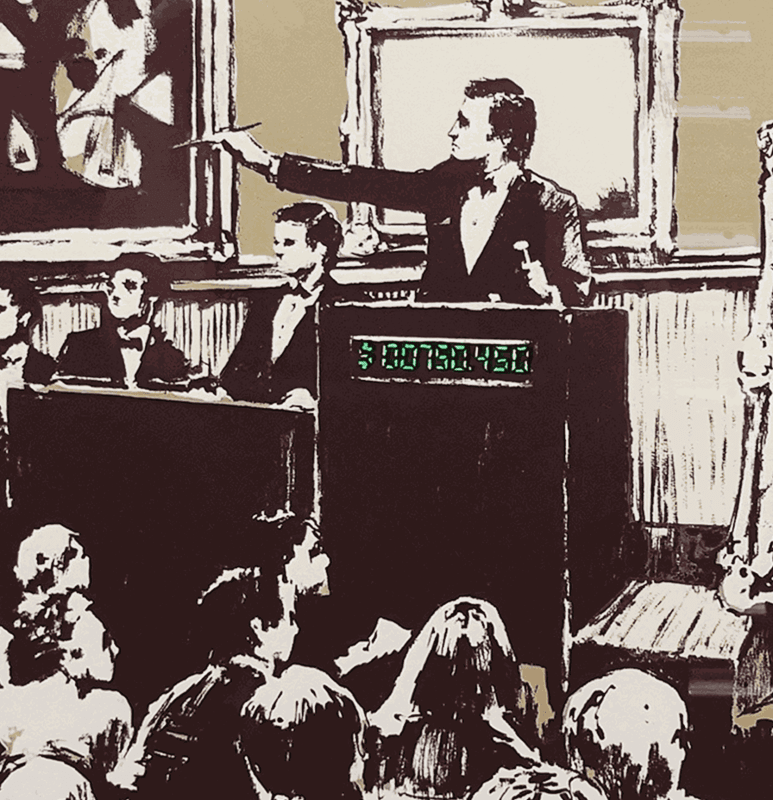First and foremost, it's important to understand that the results published by auction houses are generally the hammer price and not the price a buyer actually pays. The additional costs include the buyer’s premium (usually 25 – 35%), Artists Resale Right (4%), VAT on the premium, input VAT of 5% (dependent on the source of the work), and an auction platform fee if purchased online. Auction houses such as Sotheby’s also charge an overhead fee of 2%. All in all, the final cost for a work hammered down at, for example, £3,000 would be between £4,000 – £4,500 – and that’s before ancillary costs such as shipping.
It should also be noted that the price an individual item fetches at auction on any given day does not necessarily reflect the market value of an artwork. The value of any work can vary greatly depending on various factors including condition, frequency of sale, current demand, and presentation. However, perhaps the most significant factor is whom is (or isn’t!) in the room at the time.
Whilst buying directly from auction may appear a more cost-effective means of acquiring a particular work, it should not be entered into lightly. For example, buyers should be aware that auction houses (including the household names) do not in any way guarantee the authenticity of the works they sell. It is very clear in their terms and conditions that buyers should beware, and are expected to assess authenticity for themselves.
Neither do they warrant the condition of the artwork, posing a significant added risk to buyers. Some will provide condition reports, but even they vary in quality and veracity.
There can be a significant difference in value between a pristine work, and one that has faded slightly, one that has browned at the edges or, as we regularly find, one that has been fixed to a backing paper. This is why we studiously review each work including physical inspections where necessary.
At Hidden, we place great importance on ensuring the authenticity and condition of each piece we offer. Our buyers have decades of experience, and we meticulously review more than 300 auctions annually, evaluating thousands of artworks for their desirability, authenticity, and condition. This rigorous assessment process requires significant time and expertise to ensure that every piece we offer is worthy of investment.
Our pricing structure considers various additional costs associated with acquiring and maintaining artworks. Apart from the initial evaluation and acquisition, we also bear costs such as transportation, conservation, preservation and framing, as well as the general costs of doing business.
We use an internationally renowned conservator which can add significant extra cost, but ensures a work remains in the best condition in perpetuity, whilst our in-house framing studio uses only conservation grade materials and bespoke frames for every work.
At Hidden, we strive to make the art investing process worry-free. We go to great lengths to ensure that all concerns are eliminated, and once the meticulous work is completed, we provide a certificate guaranteeing the artwork's authenticity.
Transparency is at the heart of Hidden. We believe in openly sharing our prices, both online and in our galleries, where our knowledgeable and approachable team is available to offer advice and guidance.
In summary, we firmly believe that while purchasing artwork at an auction may result in paying a little less, the associated risks are significant and potentially very costly. In contrast, the peace of mind that comes from knowing that a piece is not only authentic, but also in the optimal condition it needs to be in to be of long-term value, is invaluable.

